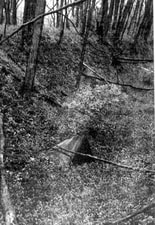
By M.P. Pellicer | Stranger Than Fiction Stories
In February, 1983, Patricia Rosansky, 17, disappeared while walking to school. Eventually a man was convicted of the crime, but even now some wonder if justice was truly served. 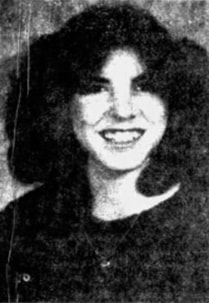 Patricia Rosansky Patricia Rosansky
Battle Creek, Michigan, 1983
Patti's body was not discovered until April 6, in a shallow ravine at an illegal dump site near the Kalamazoo River. The month before on March 13, Karry Evans, 17, disappeared from Bellevue, less than 15 miles from Battle Creek, Michigan where Rosansky had disappeared from. Her body was found on May 10. Her body like Patricia's was concealed by brush in a secluded area. In the space of one month, two 17-year-old girls who lived in the same area were abducted and killed. Rumors swirled of cult activity in the area around Kalamazoo, even though the DA discounted the theory but did investigate the angle. They stated they had a suspect, but refused to disclose the person's name. It wasn't until November, 1984, when authorities received several tips pointing to Thomas David Cress, 28. Six witnesses testified that Cress told them he killed Rosansky, he denied their story. Defendant did admit to dumping trash illegally at the site where the body was found. 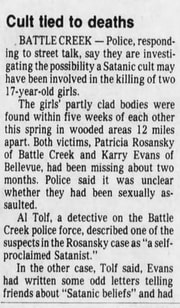 There was street talk tying the murders to cults (Source - Detroit Free Press) There was street talk tying the murders to cults (Source - Detroit Free Press)
Rosansky was identified by dental records. Two pieces of a tree limb were shoved into her throat to "obstruct her voice." She died from blows to her head with a club-like object. She had defensive injuries on the back of her hands, and she had bruises on the back of her legs, buttocks and neck. Her body was naked from the waist down, with the panties by her ankles. "There was evidence of forced anal intercourse."
Cress lived near Rosansky and had spoken to her. John Moore testified he lived with Cress and heard him state in February, 1983, after coming home in the evening that "he felt a little better because he went and knocked off a piece." Cress had also said he like Rosansky. Moore testified that in July 1983, that Cress had take him, his brother Walter and Cindy Lesly to a wooded area, pointing out where Rosansky's body would later be found. Cindy Lesly would eventually go to the police with this information and received a $5000 reward being offered for information on the crime. Candy Moore testified that Cress frequented her house almost ever day during the spring of 1983, and told her on two different occasions that "he had killed a girl named Patty and put her in a ditch." Emery DeBruine testifed in May, 1983, that he saw Cress in a bar and he told him he had raped a girl because she refused to have sex with him, and that it was a perfect crime, and no one would find out about it. Walter Moore during confession of his own crimes to the police told them that Cress said he had picked up Rosansky, and they had smoke marijuana. When she refused to have sex with him, he raped her, killed her and dumped the body in a wooded area. Cress allegedly asked different people if they had ever had sex with a corpse. Shirley House, landlady for the Moores overheard Cress say, "I cannot believe that I got so hard up I had to kill the bitch for a piece of ass." The jury found Cress guilty of first-degree felony murder. 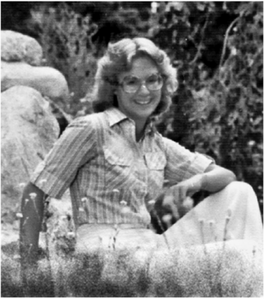 Maggie Hume Maggie Hume
In 1996, Ronning was transferred to the Michigan Department of Corrections from Arkansas to serve a life without parole provided that Ronning offered “Mirandized confessions” of the details of all his Michigan murders, pleaded guilty of these murders, and waived appellate review of his convictions. He took a polygraph examination, in which he responded affirmatively when questioned whether he had committed three homicides in Michigan, where he responded truthfully. In 1997, Ronning made three “Mirandized”, videotaped confessions of murdering Rosansky that provided varying levels of detail regarding the crime, however during two videotaped interviews he was unsuccessful in locating the exact location where Rosansky's body was found. Later he signed an affidavit, that he alone had killed her.
Ronning's interest in transferring to Michigan was that his family lived in this state. In 1998, the prosecutor desired to present new evidence attacking the veracity of Ronning's confession and more evidence regarding the allegedly recanting prosecution witnesses. Witnesses testifed that Ronning had told them he had falsely confessed to killing Rosansky because he wanted to serve his time in Michigan, and had told another witness that he read transcripts of Cress' court proceeding in order to memorize the facts of the case. Expert witnesses testified that how he described killing the victim by only one strike to the head, was inaccurate when she had received several. He also said he had strangled her, when there was no evidence of this. 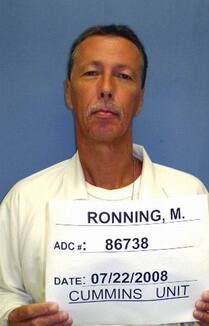 Michael Ronning c.2008 Michael Ronning c.2008
In 1996, Ronning was transferred to the Michigan Department of Corrections from Arkansas to serve a life without parole provided that Ronning offered “Mirandized confessions” of the details of all his Michigan murders, pleaded guilty of these murders, and waived appellate review of his convictions. He took a polygraph examination, in which he responded affirmatively when questioned whether he had committed three homicides in Michigan, where he responded truthfully. In 1997, Ronning made three “Mirandized”, videotaped confessions of murdering Rosansky that provided varying levels of detail regarding the crime, however during two videotaped interviews he was unsuccessful in locating the exact location where Rosansky's body was found. Later he signed an affidavit, that he alone had killed her.
Ronning's interest in transferring to Michigan was that his family lived in this state. In 1998, the prosecutor desired to present new evidence attacking the veracity of Ronning's confession and more evidence regarding the allegedly recanting prosecution witnesses. Witnesses testifed that Ronning had told them he had falsely confessed to killing Rosansky because he wanted to serve his time in Michigan, and had told another witness that he read transcripts of Cress' court proceeding in order to memorize the facts of the case. Expert witnesses testified that how he described killing the victim by only one strike to the head, was inaccurate when she had received several. He also said he had strangled her, when there was no evidence of this.  Karry Evans Karry Evans
He didn’t know the crime scene when taken there, changed his mind on what he did with the clothes and didn’t mention the body was in a ravine near the Kalamazoo River, even though he had grown up in the area.
Eventually the Calhoun County Prosecutor's office questioned a former legal secretary for the attorneys who represented Ronning since they believed that she supplied him with information about the cases. Cress' request for a new trial was denied. In 2003 the Michigan Supreme Court ruled that Ronning was unreliable and his confession was riddled with error. In 2010, Michigan Governor, Jennifer Granholm commuted Cress' life sentence. Granholm a Democrat ended her term as governor several days later. 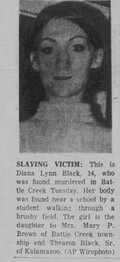 Diana Lynn Black's murder in 1969, is one of Battle Creek's oldest cold cases Diana Lynn Black's murder in 1969, is one of Battle Creek's oldest cold cases
However the death of these girls in Battle Creek would not be the only unsolved killings.
In November, 1969, Diana Lynn Black, 14, was reported missing by her mother Mary Brown. Like the other girls, she was last seen leaving to attend Lakeview High School. Her frozen body would be found a week later by another student, Greg Peltier, in a brushy field. The area was full of paths used by students walking to classes. Autopsy results indicated she'd been strangled. Tests were inconclusive as to whether she had been sexually assaulted. She had a stocking around her neck. One of her shoes was lying nearby, otherwise she was fully clothed. Her pocketbook and school books were also found at the scene. Early on the prosecutor's office said they had some leads, but nothing came of them. 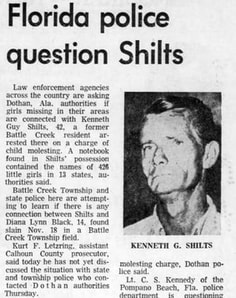 Kenneth Shilts a sex offender was considered a suspect in the disappearance of 2 girls in Pompano Beach and the murder of Diana Lynn Black Kenneth Shilts a sex offender was considered a suspect in the disappearance of 2 girls in Pompano Beach and the murder of Diana Lynn Black
In February, 1970, Kenneth Guy Shilts, was arrested in Alabama on a charge of child molesting. A notebook in his possession had a list of 426 little girls in 13 states. The Calhoun County prosecutor attempted to learn if there was any connection between Diana and Shilts.
During 1969, he had lived at 785 E. Michigan Avenue, but he soon left and would later be arrested in Dothan, Alabama for trying to molest a girl in a playground. Shilts had served in the Korean War as an Army private. He was a drifter who worked odd jobs throughout the South, even though he was a native of Battle Creek. Shilts was also investigated in the disappearance of Peggy Rahn, 9, and her friend Wendy Stephenson, 8, who disappeared from Pompano Beach, Florida in December, 1969. Shilts had an entry in his notebook referencing Wendy and Peggy, Pompano Beach. In 1956, Shilts, was arrested for assault and battery after he attempted to pull a young girl off a bus bench in San Bernardino, California. In 1960, he was charged with molesting two girls, 7 and 9, while they were visiting Capitola where he lived. By this time he was already a convicted sex offender. Shilts had his own tragic family past. HIs father Guy Shilts married Edna Crego in 1922. In the 1930 census she was living with her husband and children, but a year later in 1931, she had been adjudged insane. In 1943, when Guy Shilts sued for divorce she was an inmate at the Kalamazoo state hospital. They divorced in 1944, and he married another woman. She died in 1990. Serial killer Gerard Schaefer was also considered a suspect in the disappearance of Peggy and Wendy, and initially he denied the accusations. In 1989, he wrote a letter and confessed to murdering the girls. He was never charged in their cases, and was himself murdered in prison in 1995. The girls' bodies have never been found and the case remains unsolved. A few days after Shilts was arrested in Alabama he was ruled out as a suspect in Diana Black's murder. By January, 1971, the police were out of leads in the Black case. In December, 1972, the chamber of commerce offered a $1,000 reward through their Silent Observer program. In 1984, when the reward was raised to $5,000 for the Rosansky murder, they included the Diana Black slaying as part of the reward offering. The effort did provide leads for Rosansky, but for what was then the oldest cold case in Battle Creek no new information came in. As of 2023, all four murders remain technically unsolved. Sources - Detroit Free Press, FindLaw, Lansing State Journa, The Times Palladium
0 Comments
Your comment will be posted after it is approved.
Leave a Reply. |
Stranger Than Fiction StoriesM.P. PellicerAuthor, Narrator and Producer Archives
July 2024
Categories
All
|
Stories of the Supernatural
- Stories of the Supernatural
- Miami Ghost Chronicles
- M.P. Pellicer | Author
- Stranger Than Fiction Stories
- Eerie News
- Supernatural Storytime
-
Astrology Today
- Tarot
- Horoscope
- Zodiac
-
Haunted Places
- Animal Hauntings
- Belleview Biltmore Hotel
- Bobby Mackey's Honky Tonk
- Brookdale Lodge
- Chacachacare Island
- Coral Castle
- Drayton Hall Plantation
- Jonathan Dickinson State Park
- Kreischer Mansion
- Miami Biltmore Hotel
- Miami Forgotten Properties
- Myrtles Plantation
- Pinewood Cemetery
- Rolling Hills Asylum
- St. Ann's Retreat
- Stranahan Cromartie House
- The Devil Tree
- Trans-Allegheny Lunatic Asylum
- West Virginia Penitentiary
- Paranormal Podcasts
"When misguided public opinion honors what is despicable and despises what is honorable, punishes virtue and rewards vice, encourages what is harmful and discourages what is useful, applauds falsehood and smothers truth under indifference or insult, a nation turns its back on progress and can be restored only by the terrible lessons of catastrophe."
- Frederic Bastiat
- Frederic Bastiat

Copyright © 2009-2024 Eleventh Hour LLC. All Rights Reserved ®
DISCLAIMER
DISCLAIMER
 RSS Feed
RSS Feed
















